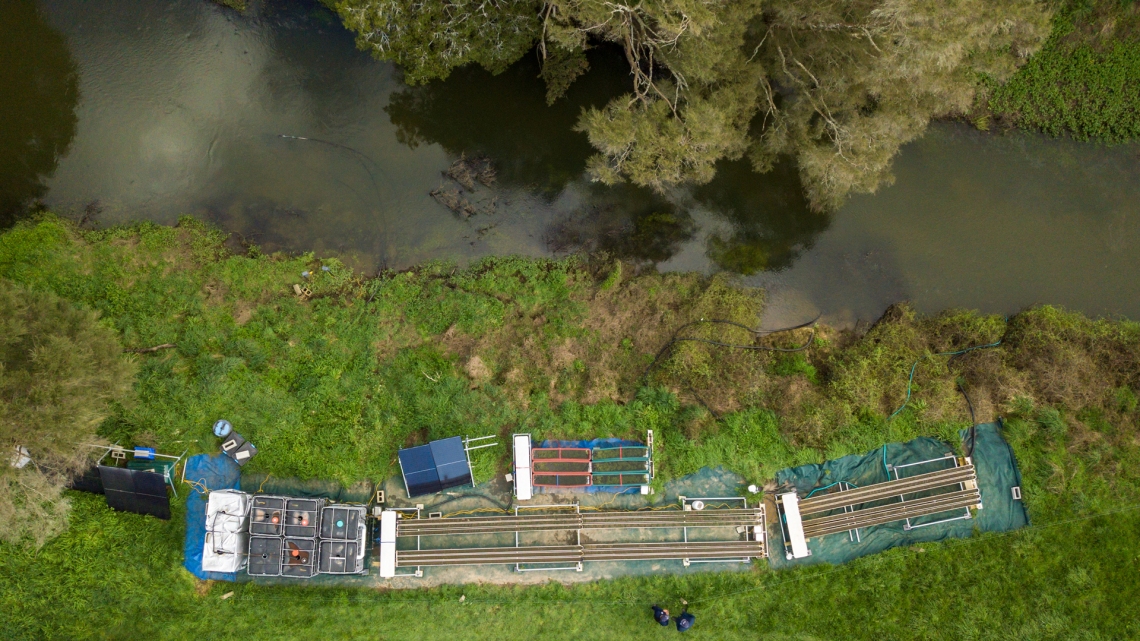NIWA is working with farming enterprises on a novel pollution mitigation technology to remove nutrients from agricultural runoff.
Filamentous Algae Nutrient Scrubbers, or FANS, are water management systems used to treat agricultural drainage, animal effluent and human wastewater.
NIWA’s Aquatic Pollution Mitigation Group in Hamilton is leading an MBIE Endeavour Fund research project to develop a FANS system for use in a rural context in New Zealand.
The project is being co-developed with Māori, the rural sector and Government partners.
FANS systems use gently sloping channels to convey drainage water through dense stands of attached New Zealand native filamentous algae.
The channels have three different water depths to determine the best depth for algal growth. They are seeded with filamentous algae from streams near the trial sites, including Oedogonium, Spirogyra, Rhyzoclonium and Cladophora.
As the drainage flows down the channel, the algae assimilate dissolved nitrogen and phosphorus from the water into algal biomass.
As the algae grows, a portion of the biomass must be harvested periodically to achieve permanent nutrient removal.
Harvesting is also important to maintain optimal biomass concentration in the channels to maximise biomass growth.
The biomass could be used for natural fertiliser and animal fodder, these and other uses are being explored by the research team and iwi partners.
Trial channels were set up at the NIWA Ruakura Algal Research Facility in Hamilton in 2021, and field trials were established using channels set up next to streams and creeks on dairy farms in the Waikato in 2022.
One farm is owned by Tainui Group Holdings and the other is owned by Paeahu Trust.
Water samples are taken at the inflow and outflow points of the FANS channels weekly to assess the nutrient concentrations before and after the treatment.
These data will determine the mass of nutrients the algae can remove.
The nutrient-removal performance of the FANS system can then be compared against the performance of other nutrient pollution mitigation technologies such as wetlands, woodchip bioreactors and riparian management.
A FANS system can be established in a few weeks and be operational soon after, much faster than a constructed wetland.
But it requires more regular maintenance than a wetland, as the algal biomass needs to be periodically harvested.
The five-year FANS project is now into its third year and the data acquired to date suggests that these systems could be widely applicable to a range of land types and nutrient loads.
Larger trial sites will be established and tested during the 2022-23 financial year. The project is scheduled for completion in 2024.



